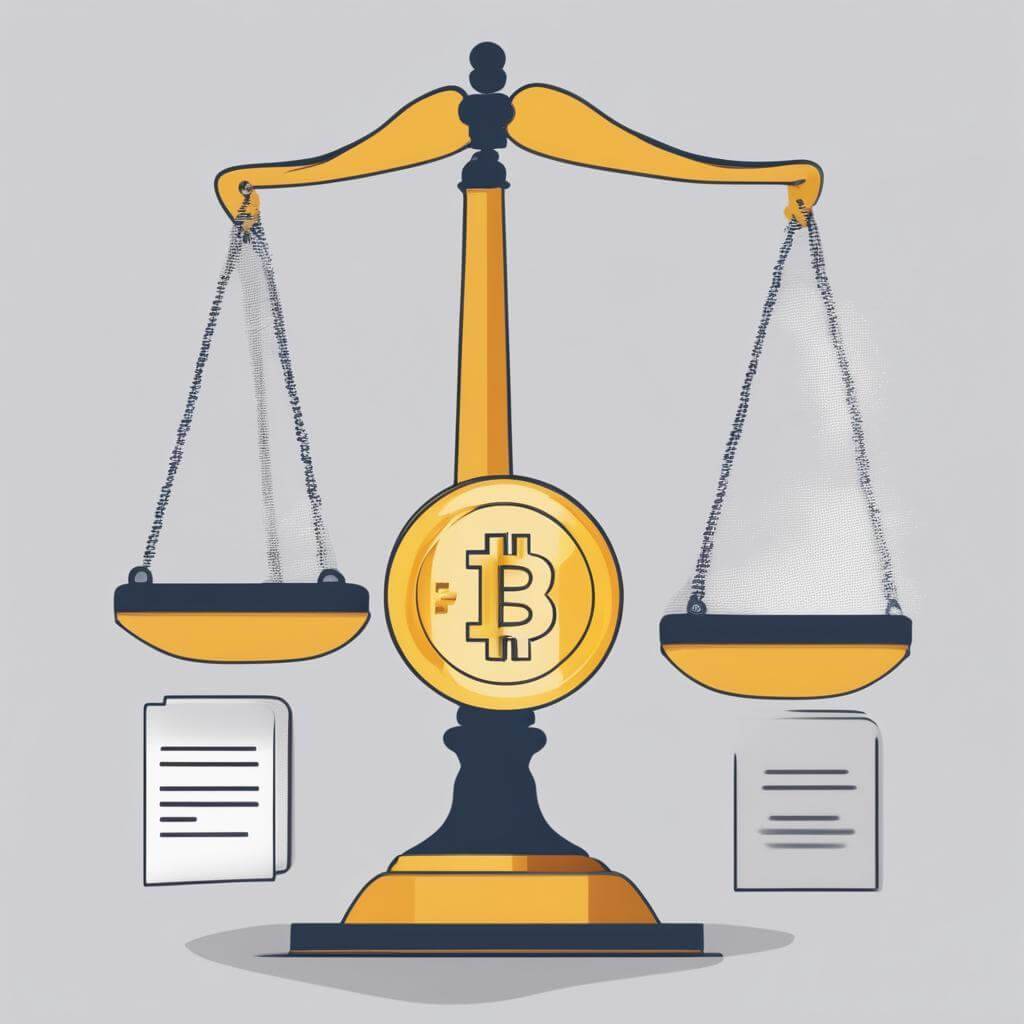The future of cryptocurrency regulation in the age of AI is a complex and rapidly evolving landscape. The convergence of these two powerful forces presents unprecedented challenges and opportunities. AI’s influence on cryptocurrency markets, from algorithmic trading to fraud detection, necessitates a regulatory framework that is both adaptable and effective. This exploration delves into the current regulatory climate, the impact of AI, emerging challenges, and potential solutions for a future where cryptocurrencies and artificial intelligence coexist harmoniously.
We will examine the current global regulatory landscape for cryptocurrencies, highlighting the difficulties regulators face in keeping up with the rapid innovation in the space, particularly the rise of decentralized finance (DeFi). We’ll then explore how AI is transforming cryptocurrency markets, from its use in high-frequency trading to its potential in combating fraud and enhancing regulatory oversight. This analysis will include a discussion of the ethical considerations and potential risks associated with AI’s growing role in this sector.
The Evolving Landscape of Cryptocurrency

The global regulatory landscape for cryptocurrencies is a complex and rapidly evolving field. Jurisdictions worldwide are grappling with how to effectively regulate this nascent asset class, balancing the potential for innovation and economic growth with the risks associated with illicit activities, market manipulation, and consumer protection. The decentralized nature of many cryptocurrencies presents unique challenges, requiring international cooperation and a flexible approach to regulation that can adapt to technological advancements.
The Current Global Regulatory Landscape for Cryptocurrencies
Currently, there is no single, globally unified regulatory framework for cryptocurrencies. Different countries have adopted varying approaches, ranging from outright bans to relatively permissive regulatory environments. Some countries, like El Salvador, have embraced Bitcoin as legal tender, while others, such as China, have implemented strict prohibitions on cryptocurrency trading and mining. Many jurisdictions are taking a more nuanced approach, focusing on regulating specific aspects of the cryptocurrency market, such as anti-money laundering (AML) and know-your-customer (KYC) compliance, while leaving other aspects less regulated.
The European Union, for example, is developing the Markets in Crypto-Assets (MiCA) regulation, aiming to establish a comprehensive framework for crypto-asset markets within its member states. This patchwork of regulations creates challenges for businesses operating in the global cryptocurrency market, requiring them to navigate a complex web of differing legal requirements.
Key Challenges Faced by Regulators in Overseeing the Cryptocurrency Market
Regulators face numerous significant challenges in overseeing the cryptocurrency market. The inherent volatility of cryptocurrency prices poses a significant risk to investors, necessitating robust consumer protection measures. The anonymity afforded by certain cryptocurrencies facilitates illicit activities, such as money laundering and terrorist financing, requiring effective AML/KYC frameworks. The cross-border nature of cryptocurrency transactions makes international cooperation crucial but difficult to achieve.
The rapid pace of technological innovation within the cryptocurrency space, including the emergence of decentralized finance (DeFi), makes it challenging for regulators to keep pace and develop effective regulations. Furthermore, the decentralized and pseudonymous nature of many cryptocurrencies makes it difficult to identify and track malicious actors. Finally, determining the appropriate classification of cryptocurrencies (as securities, commodities, or something else) is a key challenge that has significant tax and regulatory implications.
The Impact of Decentralized Finance (DeFi) on Existing Regulatory Frameworks
Decentralized finance (DeFi) presents a significant challenge to existing regulatory frameworks. DeFi applications operate on blockchain technology, bypassing traditional intermediaries such as banks and exchanges. This decentralized nature makes it difficult for regulators to exert control, enforce regulations, and protect consumers. The lack of centralized oversight makes it harder to identify and address issues such as fraud, market manipulation, and financial stability risks.
The global and borderless nature of DeFi further complicates regulatory efforts, requiring international cooperation and harmonization of regulatory approaches. Existing regulations, designed for centralized financial institutions, are often ill-suited to the decentralized nature of DeFi. This necessitates a reassessment of existing frameworks and the development of novel regulatory approaches that can address the unique risks and opportunities presented by DeFi.
Categorization of Cryptocurrencies Based on Regulatory Exposure
The following table categorizes different types of cryptocurrencies based on their regulatory exposure, acknowledging that this is a simplified representation and the regulatory landscape is constantly evolving:
| Currency Name | Type | Regulatory Status (Illustrative – varies by jurisdiction) | Key Risks |
|---|---|---|---|
| Bitcoin (BTC) | Cryptocurrency/Digital Gold | Varying; some jurisdictions treat as a commodity, others have specific regulations | Volatility, security risks, regulatory uncertainty |
| Ethereum (ETH) | Cryptocurrency/Smart Contract Platform | Similar to Bitcoin, varying treatment across jurisdictions | Volatility, security risks, regulatory uncertainty, risks associated with smart contracts |
| Tether (USDT) | Stablecoin | Increasingly subject to scrutiny regarding reserve backing and regulatory compliance | Counterparty risk, lack of transparency, regulatory uncertainty |
| Wrapped Bitcoin (WBTC) | Wrapped Cryptocurrency | Regulatory status largely depends on the underlying asset and the platform used for wrapping | Security risks associated with the wrapping process, counterparty risk |
AI’s Influence on Cryptocurrency Markets and Transactions

The integration of artificial intelligence (AI) is profoundly reshaping the cryptocurrency landscape, impacting market dynamics, transaction security, and regulatory oversight. AI’s sophisticated algorithms and machine learning capabilities are being leveraged in various ways, presenting both significant opportunities and considerable challenges for the future of this rapidly evolving digital asset class. This section will explore the multifaceted influence of AI on cryptocurrency markets and transactions.AI-powered trading bots and algorithms are significantly impacting market volatility.
These automated systems, capable of processing vast amounts of data and executing trades at speeds far exceeding human capabilities, can amplify existing market trends or even create new ones. High-frequency trading (HFT) strategies, often employing AI, contribute to rapid price fluctuations, making it challenging for less technologically advanced participants to navigate the market effectively. For example, a sudden surge in buying activity by multiple AI-powered bots, reacting to a specific market signal, can quickly drive up the price of a cryptocurrency, potentially creating a short-lived “pump and dump” scenario before a subsequent correction.
Conversely, coordinated selling by AI bots can trigger rapid price declines. The overall impact is increased market volatility, requiring investors to adapt to this new dynamic.
AI’s Role in Fraud Detection and Prevention
AI plays a crucial role in enhancing the security of cryptocurrency transactions by detecting and preventing fraudulent activities. Machine learning models can analyze transaction patterns, identifying anomalies indicative of money laundering, scams, or other illicit activities. These models are trained on vast datasets of historical transactions, learning to recognize suspicious behavior such as unusually large transfers, rapid movement of funds across multiple accounts, or transactions originating from known high-risk sources.
For instance, an AI system might flag a transaction involving a large sum of cryptocurrency sent to a newly created wallet with no prior activity, a strong indicator of potential money laundering. The integration of AI-powered security measures is vital in mitigating risks and maintaining the integrity of the cryptocurrency ecosystem.
AI in Blockchain Data Analysis for Regulatory Purposes
Regulatory bodies are increasingly utilizing AI to analyze blockchain data for compliance and investigative purposes. The decentralized and transparent nature of blockchain technology provides a rich source of information, but the sheer volume of data makes manual analysis impractical. AI algorithms can efficiently sift through this data, identifying patterns and anomalies that may indicate regulatory violations. For example, AI can be used to track the flow of cryptocurrency associated with sanctioned entities or to detect tax evasion schemes involving cryptocurrencies.
The application of AI in regulatory technology (RegTech) is expected to become increasingly important as the cryptocurrency market continues to grow and mature.
Comparison of Benefits and Risks of AI-Driven Cryptocurrency Trading
AI-driven cryptocurrency trading offers several potential benefits, including increased efficiency, speed, and the ability to identify profitable trading opportunities that might be missed by human traders. However, it also presents significant risks. The reliance on algorithms can lead to increased market volatility and the potential for unforeseen consequences due to unforeseen market events or errors in the AI’s programming.
Furthermore, the opacity of some AI algorithms can make it difficult to understand their decision-making processes, raising concerns about accountability and transparency. A balanced approach is necessary, leveraging the benefits of AI while mitigating its potential risks through robust regulation and oversight. The development of explainable AI (XAI) is crucial in addressing this transparency challenge, enabling regulators and users to better understand the reasoning behind AI-driven trading decisions.
Regulatory Challenges Posed by AI in the Crypto Space

The rapid integration of artificial intelligence (AI) into the cryptocurrency sector presents unprecedented challenges for regulators worldwide. The decentralized and borderless nature of cryptocurrencies, combined with the sophisticated capabilities of AI, creates a complex regulatory landscape demanding innovative and adaptable solutions. This section will explore the key challenges regulators face in navigating this evolving terrain, focusing on AI’s potential for regulatory circumvention and the ethical considerations involved.The inherent speed and complexity of AI development significantly outpaces traditional regulatory processes.
Regulators struggle to keep pace with the constant emergence of new AI-driven tools and techniques used in cryptocurrency trading, money laundering, and other illicit activities. This technological gap necessitates a shift towards more agile and flexible regulatory frameworks capable of adapting to the rapidly changing landscape. Moreover, the global nature of cryptocurrencies complicates regulatory efforts, requiring international cooperation and harmonization of regulations which is often difficult to achieve.
AI’s Potential for Regulatory Circumvention
AI’s ability to analyze vast datasets and identify patterns allows for the development of sophisticated strategies to circumvent existing regulations. For example, AI-powered bots can be used to manipulate market prices, evade Know Your Customer (KYC) and Anti-Money Laundering (AML) protocols, and create synthetic identities to conceal illicit transactions. The decentralized and pseudonymous nature of many cryptocurrencies further exacerbates this problem, making it challenging to trace the origins and destinations of funds.
Furthermore, AI can be employed to create highly effective camouflage techniques, making it increasingly difficult to detect and prosecute illegal activities. Consider, for instance, the use of AI to generate fake identities and documents, making it harder to verify the identities of cryptocurrency users. This requires a substantial shift in regulatory thinking, moving beyond traditional methods towards proactive and adaptive strategies that leverage AI’s capabilities to combat its own malicious applications.
Ethical Considerations in AI-Driven Cryptocurrency Regulation
The use of AI in cryptocurrency regulation raises several ethical considerations. The potential for algorithmic bias in AI systems is a major concern. If AI algorithms are trained on biased data, they may perpetuate and even amplify existing inequalities, leading to unfair or discriminatory outcomes. For example, an AI system used for fraud detection might disproportionately target users from certain demographic groups, even if they are not engaging in any illicit activity.
Additionally, the lack of transparency in many AI algorithms can make it difficult to understand how decisions are made, potentially leading to a lack of accountability and trust. Balancing the need for effective regulation with the protection of individual rights and freedoms is crucial, demanding careful consideration of fairness, transparency, and accountability in the design and implementation of AI-driven regulatory tools.
Potential Regulatory Responses
The challenges posed by AI in the cryptocurrency market require a multifaceted regulatory response. Effective regulation necessitates a collaborative approach involving international cooperation, technological advancements, and a strong ethical framework.
- Develop adaptable regulatory frameworks: Regulations should be designed to be flexible and adaptable to the rapid pace of technological change, allowing for swift updates and adjustments as needed.
- Invest in AI-powered regulatory tools: Regulators should invest in developing and deploying AI-powered tools to monitor and analyze cryptocurrency transactions, detect illicit activities, and enforce regulations more effectively.
- Promote transparency and accountability in AI systems: Regulatory frameworks should mandate transparency and accountability in the design, development, and deployment of AI systems used in cryptocurrency regulation, ensuring fairness and preventing bias.
- Foster international cooperation: Given the global nature of cryptocurrencies, international cooperation is crucial for effective regulation. Harmonizing regulatory standards and sharing information across jurisdictions is essential.
- Encourage the development of ethical AI guidelines: The development and adoption of ethical guidelines for the use of AI in cryptocurrency regulation can help to mitigate potential risks and ensure responsible innovation.
The Future of Regulatory Frameworks
The convergence of artificial intelligence (AI) and cryptocurrencies presents unprecedented challenges and opportunities for regulators worldwide. A robust and adaptable regulatory framework is crucial to fostering innovation while mitigating risks associated with AI-driven manipulation, algorithmic trading, and the potential for increased financial crime. This necessitates a multi-faceted approach that considers both the unique characteristics of AI and the decentralized nature of cryptocurrencies.A potential framework for regulating AI’s role in the cryptocurrency market must balance innovation with consumer protection.
This requires a dynamic approach that adapts to the rapid technological advancements in both fields. It’s vital to avoid stifling innovation while ensuring the integrity and stability of the financial system.
A Proposed Regulatory Framework for AI in Cryptocurrency
This framework proposes a tiered approach based on the risk posed by different AI applications within the cryptocurrency ecosystem. Tier 1 would encompass low-risk applications, such as AI-powered customer support chatbots, requiring minimal regulatory oversight. Tier 2 would include medium-risk applications, like algorithmic trading bots, requiring registration and adherence to established best practices. Tier 3, the highest-risk category, would comprise AI systems capable of significant market manipulation or fraud, subject to stringent oversight and potentially licensing requirements.
This tiered approach allows for a proportionate regulatory response, focusing resources on the most critical areas. The framework would also incorporate regular reviews and updates to ensure its continued relevance in the face of evolving technology. Transparency in the regulatory process is key to building trust and fostering collaboration among stakeholders.
International Cooperation in Regulating AI and Cryptocurrencies
Effective regulation in the crypto-AI space necessitates strong international cooperation. The decentralized and borderless nature of cryptocurrencies renders national-level regulation insufficient. Potential approaches include the establishment of international regulatory bodies, similar to the Financial Stability Board (FSB), specifically focused on AI and cryptocurrencies. These bodies could facilitate information sharing, harmonize regulatory standards, and coordinate enforcement actions across jurisdictions.
Furthermore, the development of common technical standards and best practices for AI in finance would be crucial for interoperability and reducing regulatory arbitrage. Examples of successful international cooperation in other sectors, such as aviation safety standards established by the International Civil Aviation Organization (ICAO), provide a model for this endeavor.
Adapting Regulatory Models from Other Technological Sectors
Several regulatory models from other sectors offer valuable lessons for the crypto-AI space. The regulatory framework for the pharmaceutical industry, with its rigorous testing and approval processes, could provide a model for vetting AI algorithms used in high-risk financial applications. Similarly, the regulatory approach to data privacy, as exemplified by the General Data Protection Regulation (GDPR) in Europe, offers valuable insights into managing the data security and privacy concerns associated with AI in cryptocurrency.
Adapting these existing models requires careful consideration of the unique characteristics of AI and cryptocurrencies, but the underlying principles of risk assessment, transparency, and accountability remain applicable.
Utilizing Blockchain for Enhanced Transparency and Accountability, The future of cryptocurrency regulation in the age of AI
Ironically, blockchain technology, the foundation of many cryptocurrencies, can be leveraged to enhance transparency and accountability in cryptocurrency regulation itself. A distributed ledger system could record regulatory actions, compliance data, and audit trails, making them publicly auditable and verifiable. This would enhance the transparency of regulatory processes and foster greater trust in the regulatory framework. For example, a blockchain-based system could track the licensing and registration of AI-powered trading platforms, providing a readily accessible and tamper-proof record for regulators and the public.
This approach promotes greater accountability and reduces the potential for regulatory capture or manipulation.
Impact on Investors and Consumers

The increasing regulatory scrutiny of cryptocurrencies, amplified by the integration of AI, presents both opportunities and challenges for investors and consumers. Understanding these implications is crucial for navigating this evolving landscape and mitigating potential risks. Increased regulation, while aiming to protect consumers, can also impact investment strategies and market dynamics in significant ways.The potential impact of heightened cryptocurrency regulation on investors is multifaceted.
Increased compliance costs, for instance, could make smaller investments less profitable, potentially driving consolidation within the market. More stringent Know Your Customer (KYC) and Anti-Money Laundering (AML) regulations could also restrict access for some investors, particularly those in jurisdictions with less developed regulatory frameworks. Conversely, clearer regulatory guidelines could boost investor confidence, leading to greater institutional investment and market stability.
This would likely result in more predictable price movements and reduced volatility, although it may also limit the potential for exceptionally high returns associated with higher-risk investments.
Consumer Protection in the Cryptocurrency Market with AI
The integration of AI into the cryptocurrency market presents both enhanced opportunities for fraud and improved mechanisms for consumer protection. AI-powered trading bots, for example, can be used to execute trades at optimal times, potentially increasing profits for investors. However, these same bots can also be exploited by malicious actors to manipulate markets or engage in sophisticated forms of fraud.
AI-driven scams, such as deepfakes impersonating prominent figures in the crypto space, pose a significant threat to unsuspecting consumers. On the other hand, AI can also be employed to enhance consumer protection by identifying and flagging suspicious transactions, detecting fraudulent activities in real-time, and improving the overall security of cryptocurrency exchanges. Regulatory frameworks must therefore adapt to leverage the positive potential of AI while simultaneously mitigating its inherent risks.
Strategies for Educating Investors and Consumers
Effective education is crucial to mitigate the risks associated with cryptocurrencies in the age of AI. Strategies should focus on increasing financial literacy related to blockchain technology, decentralized finance (DeFi), and the implications of AI within this space. This includes providing easily accessible resources, such as online courses, webinars, and informative articles, tailored to different levels of technical expertise.
Furthermore, government agencies and industry bodies should collaborate to create standardized educational materials and promote responsible investment practices. Clear and concise information regarding the risks and benefits of specific cryptocurrencies and AI-powered trading tools is essential to empower consumers to make informed decisions. This educational push should also emphasize the importance of verifying information from credible sources and recognizing the signs of scams.
Scenario: Inadequate Regulation’s Consequences
Imagine a scenario where AI-powered trading bots are unregulated, allowing sophisticated market manipulation by malicious actors. A coordinated attack could artificially inflate the price of a cryptocurrency, attracting unsuspecting investors. Once the price reaches its peak, the manipulators abruptly sell their holdings, causing a dramatic crash and wiping out the investments of countless individuals. Simultaneously, AI-driven scams proliferate, targeting vulnerable consumers with deepfakes and misleading information. The lack of robust regulatory frameworks and consumer protection mechanisms leaves individuals with little recourse, leading to significant financial losses and a widespread erosion of trust in the cryptocurrency market. This could ultimately stifle innovation and hinder the potential benefits of blockchain technology.
Final Wrap-Up: The Future Of Cryptocurrency Regulation In The Age Of AI

Navigating the intersection of cryptocurrency and AI regulation requires a proactive and collaborative approach. While the challenges are significant—from adapting to rapid technological advancements to mitigating the potential for AI-driven manipulation—the opportunities for creating a more transparent, secure, and efficient cryptocurrency ecosystem are substantial. By fostering international cooperation, developing adaptable regulatory frameworks, and leveraging blockchain’s inherent transparency, we can pave the way for a future where both technologies thrive responsibly.

